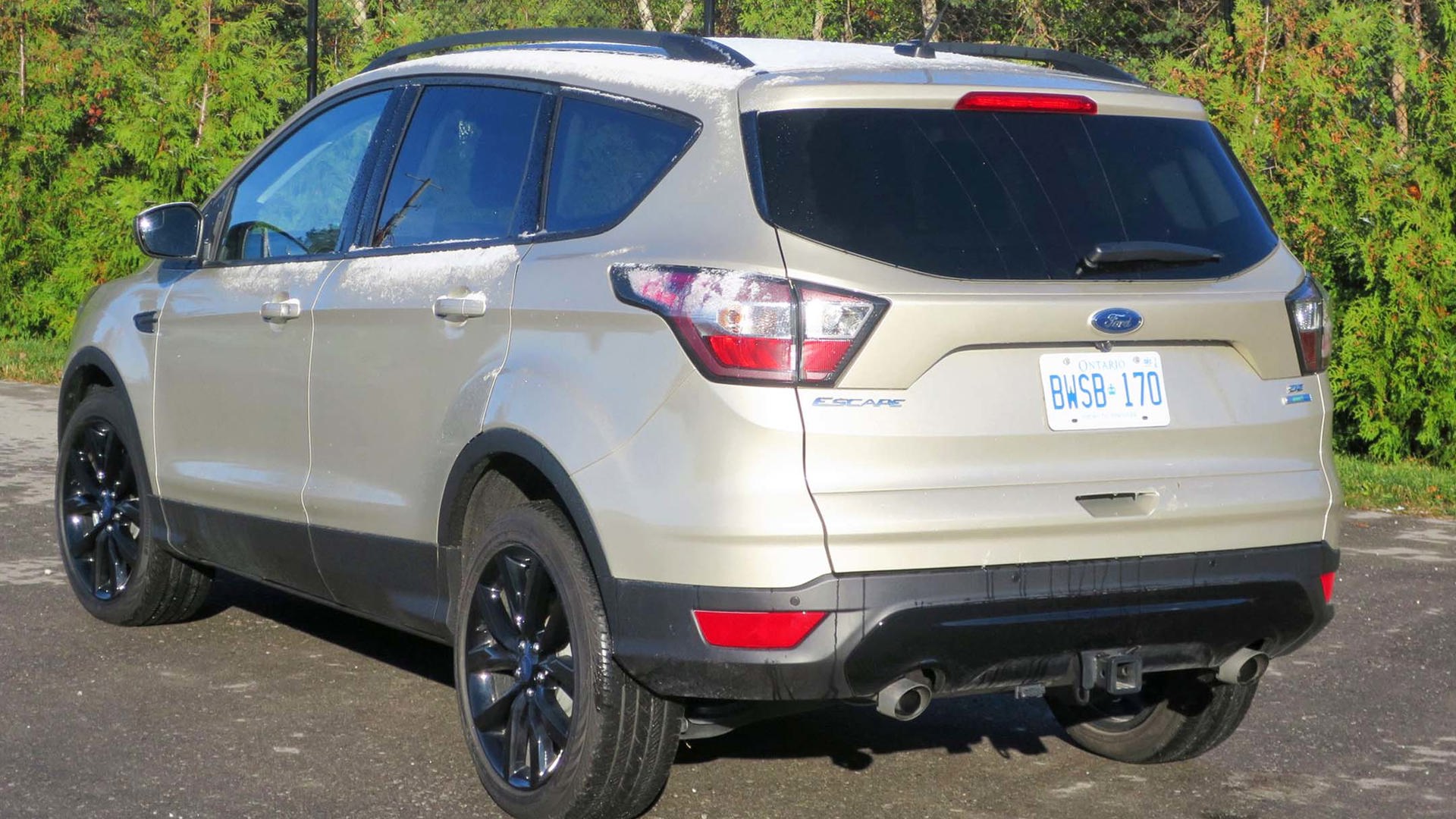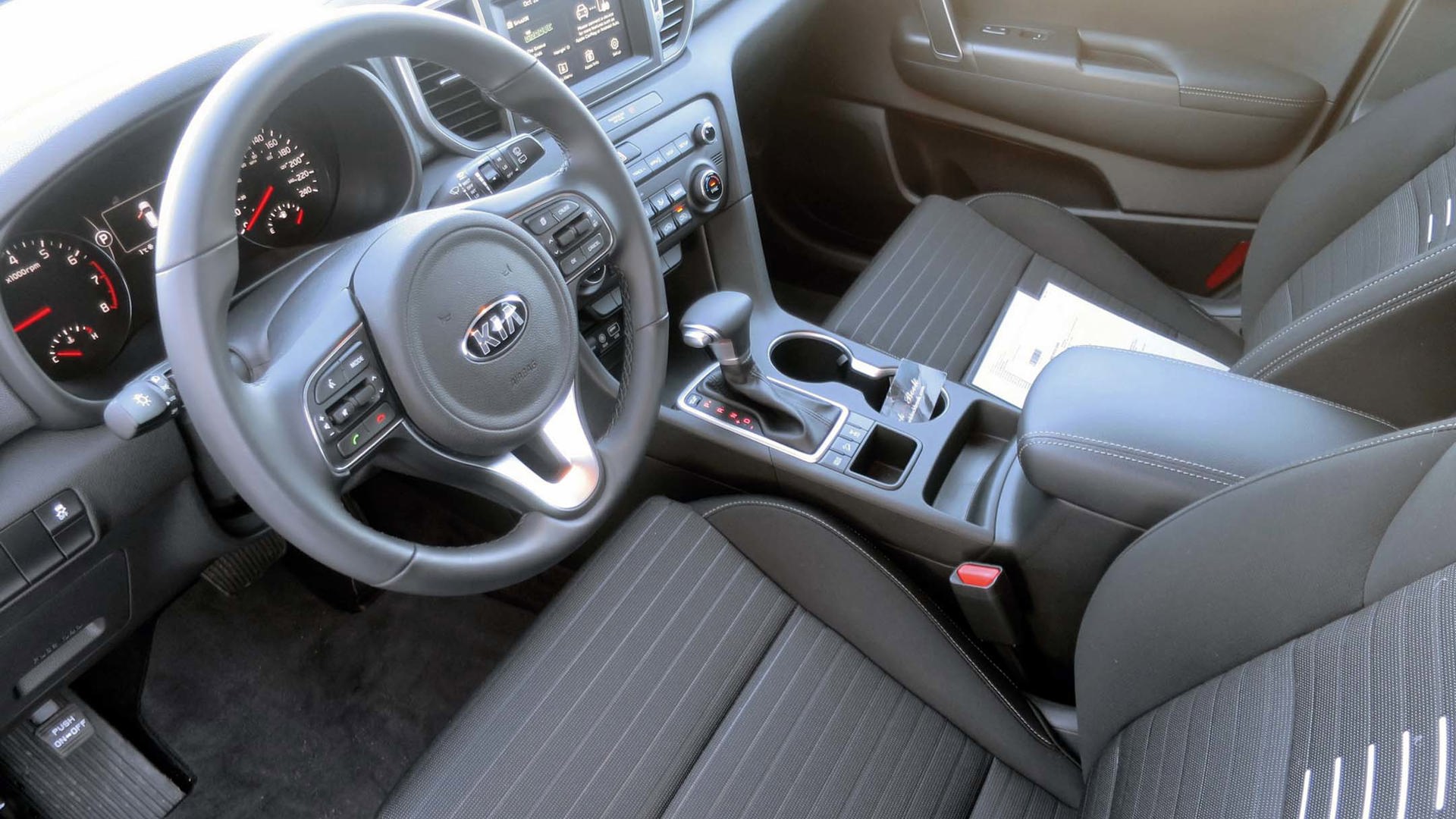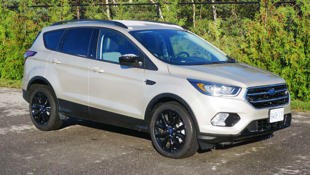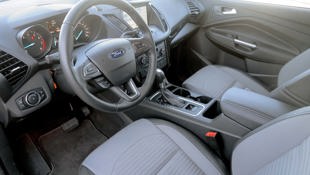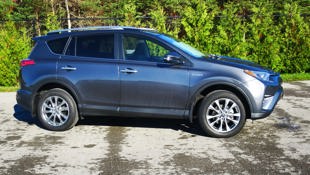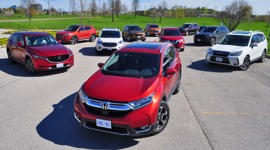Sunny skies greeted AJAC’s weeklong Canadian Car of the Year “Testfest” – in October, no less.
But too bad the Small Utility category of vehicles, so popular in Canada, saw only four entrants. The low number was indicative of the overall depleted field at this year’s event, but also explained by the fact that there were fewer “all-new” 2017 small utility vehicles released. A timing issue, as it were, although there was arguably a notable no-show in the form of the latest Nissan Rogue.
Nonetheless, the 2017 versions of the Ford Escape, Subaru Forester, Kia Sportage and Toyota RAV4 Hybrid – all equipped with all-wheel drive – did comprise a representative selection that were put through their paces on local roads and on a purpose-built off-road trail. They were also performance-tested for acceleration and braking, as is the AJAC practice at this event.
2017 Ford Escape ($35,749)
Let’s start with the Ford Escape, Canada’s top-selling small SUV. This year’s entry ($29,799 base, $35,749 as tested) wears a new grille – overly formal for its small dimensions, in my opinion – and was powered by a 2.0L EcoBoost turbocharged engine making a lusty 245 horsepower and 275 pound-feet of torque via a six-speed automatic transmission. (Regular grade fuel recommended – why can’t the Germans do this?) Navigation, power liftgate, fancy wheels and trailer sway control are also included at this price.
The Escape was easily the most powerful vehicle in the group, doing the 0–100 km/h run in a brisk 7.6 seconds and requiring 42.2 metres to stop from 100 km/h; plus, it will tow a class-leading 1,587 kilograms (close to 3,500 pounds). Fuel consumption is rated at 11.5/8.7/10.2: not bad, not great – but if you want the power...
The Escape is a pleasure to drive, feeling planted on the road and nimble in the corners. It’s roomy and car-like but capable off-road too. However, it did get stuck in a depression that took numerous attempts to, um... escape, and I noticed that one other Escape driver got bogged down in the same place as well. That said, several journalists I consulted said they had no problem at all.
What I didn’t particularly care for about the Escape was its interior design (other than the smart two-tone seats). Too busy, I thought: it just seemed an argument of knobs, switches, bulges and protrusions, so unlike the sleek interiors of the Edge and Taurus that I’ve seen recently. But overall, the Escape offers a lot.
2017 Kia Sportage ($29,995)
The Kia Sportage continues to evolve, building on an excellent outgoing model and loaded with standard equipment as is the Korean automaker’s style. With a base price of $24,895 and as-tested price of $29,995, the Sportage indeed offers a lot for the money, although at this EX trim level it’s certainly not as quick as the Escape.
Powered with a 2.4L direct-injected engine making 181 hp and 175 lb-ft of torque through a six-speed automatic transmission, the Sportage is notably stable on the road, and managed the off-road trail without difficulty. Zero to 100 km/h took a slow-ish 10.0 seconds, and braking from 100 km/h required 43.9 m. The 2017 Kia Sportage will tow 795 kg (1,750 lb) and consumes fuel at the rate of 11.3/9.5/10.5 L/100 km, city/highway/combined.
Lots of bells and whistles at this price: 18-inch alloy wheels, power folding mirrors, automatic climate control; but no power liftgate and no navigation unless you tether your smartphone to its system, which I wouldn’t recommend.
The interior of the Sportage is a nice place to be, comfortable seats, partial leather, controls laid out rationally, with familiar buttons and switches to operate your climate and entertainment systems. The Sportage also boasted the largest occupant/cargo capacity of the four entries.
2017 Subaru Forester ($33,295)
At 220 millimetres, the Subaru Forester’s ground clearance is best in class, and this refreshed model breezed through the off-road course without breaking a sweat (or using its new X Mode with hill-descent control feature), a testament to Subaru’s clever all-wheel-drive system.
Foresters start at $25,995, although our CVT-transmission model with optional technology package (includes navigation, power liftgate and EyeSight radar-based safety system) increased that to $33,295. The Forester is powered by a 2.5L flat-four cylinder engine that’s been in service for many years. The engine (in conjunction with the CVT gearbox) now delivers excellent fuel economy and the interior of the 2017 Forester is quieter due to acoustic glass and additional insulation. Indeed, it is quieter than previous models, but road noise still intrudes.
Peculiarly, the Forester looks smaller than much of its competition. Maybe it’s the boxy lines, but in fact, this Subaru is longer than the three other vehicles in this class, and very competitive in interior volume, too. Towing is limited to 868 kg (1,500 lb) with trailer brakes (453 kg, 1,000 lb without), so it’s not much of a hauler.
Acceleration from standstill to 100 km/h takes 9.8 seconds, and stopping from 100 km/h requires 42.0 metres (best in this group). Fuel consumption is an impressive 9.2/7.2/8.4 L/100km, city/highway/combined (interesting to compare to RAV4 Hybrid below). The Subaru CVT gearbox (any CVT gearbox, actually) is not my preferred transmission. The sound is not pleasant under acceleration and compared with a conventional automatic, it’s not as predictable on the road. You do get used to it, though.
The Forester offers a combination of solid build quality, conservative styling and useful electronic safety aids: it’s the Harris Tweed of small utility vehicles.
2017 Toyota RAV4 Hybrid ($41,750)
The 2017 Toyota RAV4 Hybrid (built in Japan, not in Canada as are other RAVs sold here) develops a peak of 190 hp from its 2.5L gasoline/hybrid powerplant, which rather surprised me. And it will “get up and go” (noisily, I grant you) if you step hard on the gas. With a base price of $34,405, our test version stickered at $41,750, being equipped with all manner of optional equipment. Features included 18-inch alloy wheels, heated steering wheel, 360-degree surround camera, radar-based cruise control, LED headlights, power adjustable liftgate, navigation system and more. Fuel economy is rated at a stingy 6.9/7.8/7.3 L/100km, city/highway/combined, which is very impressive for a compact SUV.
The RAV4’s interior is nicely appointed, the driving position is comfortable, and I got around the off-road course without problem. Acceleration from 0–100 km/h is attained in a creditable 9.0 seconds; again, better than I expected. The RAV4 Hybrid will even tow 795 kg (1,750 lb). Not bad! But stopping from 100 km/h was the worst of the bunch at 46.6 metres, which is a full 4.6 m (15 feet) more than the Forester. The RAV4 Hybrid is the heaviest of this group; maybe it should have bigger brakes.
My prediction is that the Ford Escape will prevail. Its nicely finished, smart exterior, high-performance engine and sporty handling should appeal to the AJAC journalists.
Alternatives
What was missing in this test? Arguably the 2017 Nissan Rogue, as mentioned above. I liked the latest Rogue and its 2017 mid-cycle refresh might have allowed it into this year’s event. Nissan didn’t enter it, though. Also I would like to have seen the 2017 Mitsubishi Outlander, if only to recall what a V6 feels like.
But the most obvious vehicle not on the list? The new Mazda CX-5, always a contender in this class and set for its reveal at the upcoming Los Angeles Auto Show in November. Next year, I guess.
By the numbers
|
Model |
As-tested price |
Acceleration 0–100 km/h (s) |
Braking from 100 km/h (m) |
Fuel economy (L/100 km, cty/hwy/cmb) |
Towing Capacity (kg/lb) |
|---|---|---|---|---|---|
|
Ford Escape |
$35,749 |
7.6 |
42.2 |
11.5/8.7/10.2 |
1,587/3,500 |
|
Kia Sportage |
$29,995 |
10.0 |
43.9 |
11.3/9.5/10.5 |
795/1,750 |
|
Subaru Forester |
$33,295 |
9.8 |
42.0 |
9.2/7.2/8.4 |
868/1,500 |
|
Toyota RAV4 Hybrid |
$41,750 |
9.0 |
46.6 |
6.9/7.8/7.3 |
795/1,750 |


